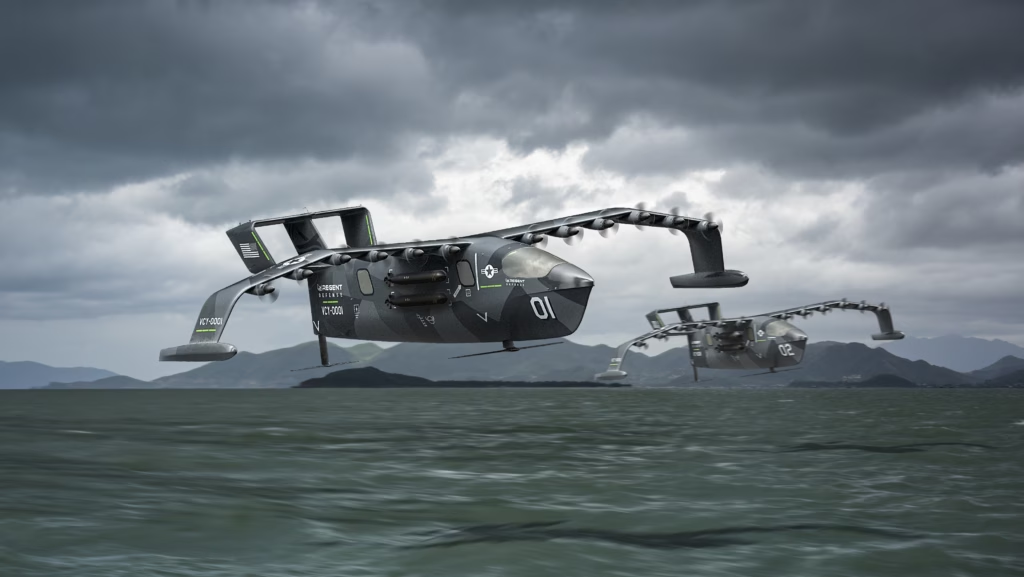
The US Marine Corps has continuously evolved its doctrine, tactics, and technology to remain effective in changing combat environments. In the 21st century, the rise of near-peer adversaries, increasingly complex coastal defenses, and the shifting nature of conflict in the Indo-Pacific region have placed renewed emphasis on the Marine Corps’ ability to conduct fast, dispersed, and survivable amphibious assaults.
One of the most promising innovations that may transform this aspect of warfare is the Regent Viceroy Seaglider—a revolutionary maritime aircraft that leverages wing-in-ground effect technology to move swiftly and stealthily over coastal waters. While originally designed for commercial passenger transport, the Viceroy’s potential as a military insertion vehicle offers enormous strategic value for amphibious operations. Its combination of speed, low radar visibility, and operational flexibility positions it as a potential game-changer in future Marine Corps assaults on hostile shorelines.
What Is the Regent Viceroy Seaglider?
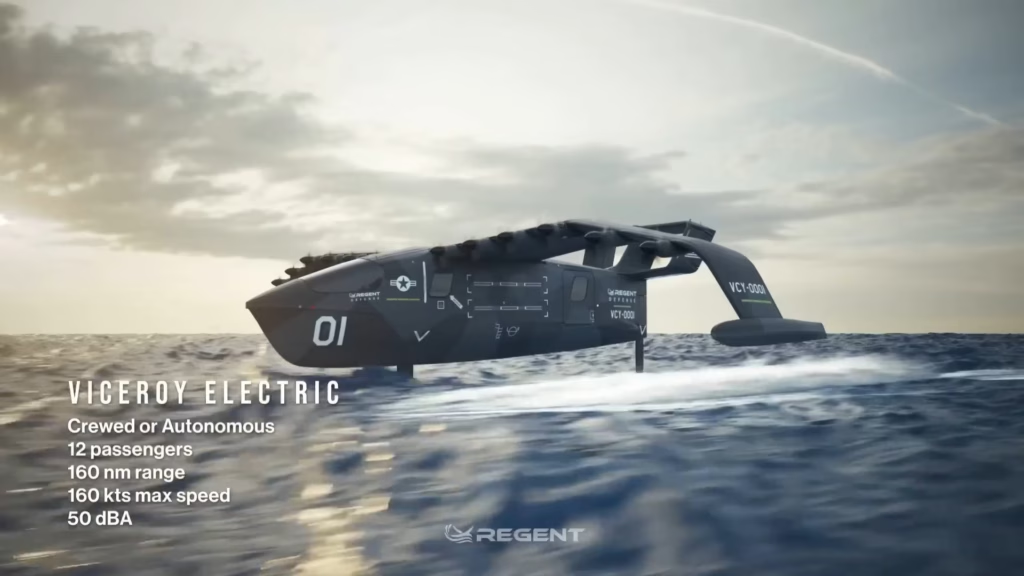
The Regent Viceroy Seaglider is not an aircraft in the traditional sense, nor is it a boat. It belongs to a unique category of vehicles known as Wing-in-Ground (WIG) effect craft. These vehicles operate just above the surface of water—typically within a wingspan’s height—where they generate increased lift and reduced drag due to the aerodynamic ground effect. This enables them to fly faster than boats and hover closer to the surface than aircraft, allowing a hybrid approach to mobility that is particularly effective in littoral or coastal zones.
The Viceroy, with a top speed of around 180 mph and a projected range of 180 miles on fully electric propulsion, is designed to operate from standard marine infrastructure such as docks and piers, removing the need for runways or extensive logistics support. Its ability to transition from floating to hydroplaning to low-altitude gliding makes it ideal for rapid amphibious mobility.
Speed and Surprise
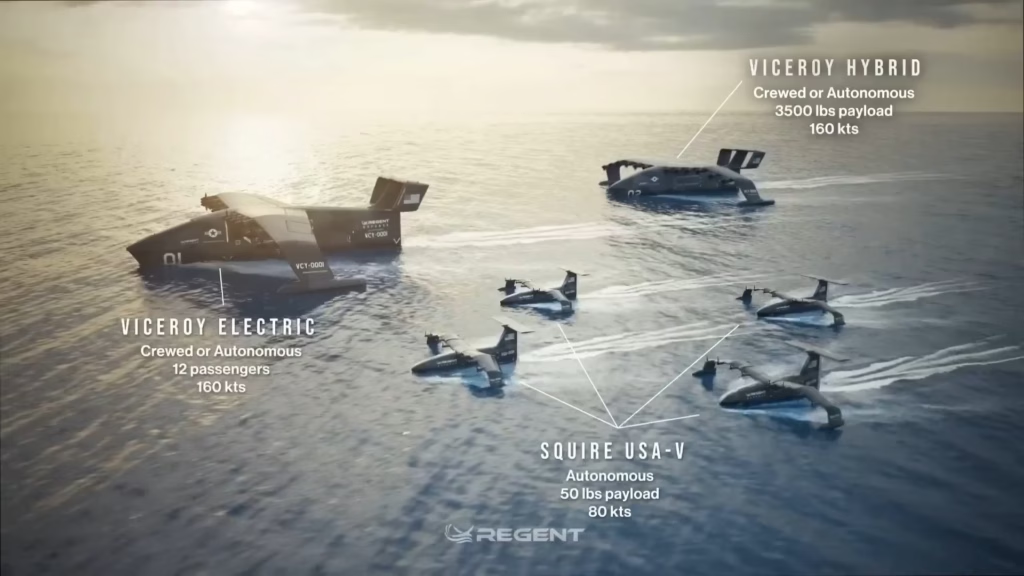
From a military standpoint, the Viceroy’s unique flight envelope is especially attractive for shoreline assault scenarios. Traditionally, amphibious assaults have been conducted using a combination of landing craft, amphibious assault vehicles, helicopters, and tiltrotors. While effective, each of these systems carries its own vulnerabilities. Landing craft and amphibious vehicles are slow and vulnerable to modern precision-guided munitions and coastal defense systems. Helicopters and tiltrotors, although faster, are noisy, limited by weather, and highly visible to radar.
The Viceroy, in contrast, offers a platform that is extremely fast, nearly silent due to its electric motors, and can fly below conventional radar coverage by skimming the ocean surface. In operational terms, this translates to enhanced survivability, reduced detection risk, and the ability to insert Marines closer to contested shorelines without drawing enemy fire during transit.
Flying Under the Radar
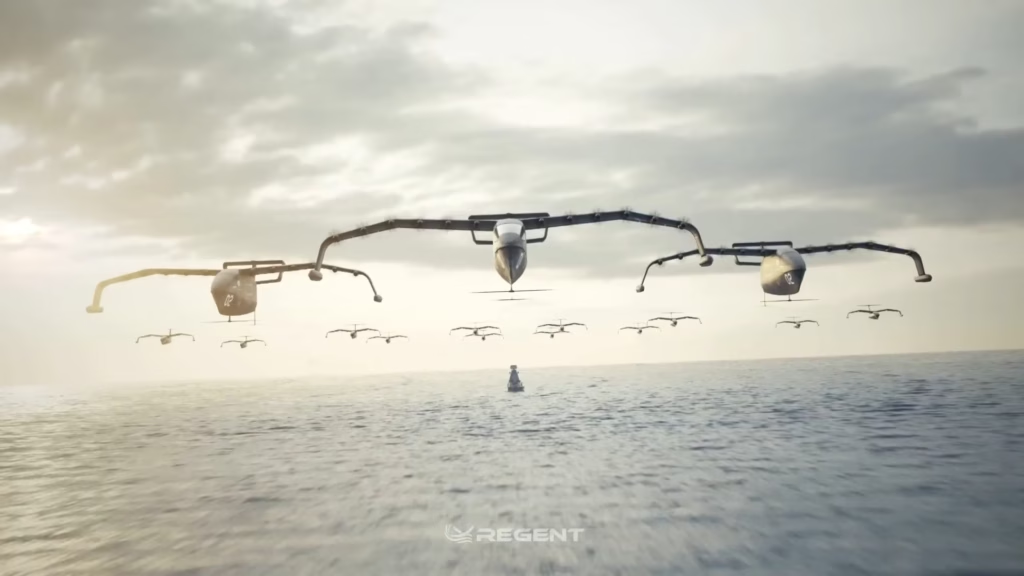
Perhaps the most important tactical benefit the Viceroy Seaglider brings to the U.S. Marines is its potential for rapid ship-to-shore movement. In traditional amphibious operations, the period between launching an assault from ships and reaching the beach—often called the “danger window”—is a time when forces are highly vulnerable. Slow-moving landing craft can take over an hour to traverse distances of 10–20 nautical miles from an amphibious ship to shore, offering ample time for enemy sensors to detect the approach and cue in defensive systems. The Viceroy, traveling at up to 180 mph, can reduce this transit time to minutes.
A fleet of Viceroys launched simultaneously from multiple points could deploy assault elements across a wide front, reducing exposure, increasing surprise, and enhancing the element of operational shock. Furthermore, flying only meters above the water, the craft would be extremely difficult to detect with standard radar systems, behaving more like sea-skimming cruise missiles than traditional vehicles.
The Power of Silence
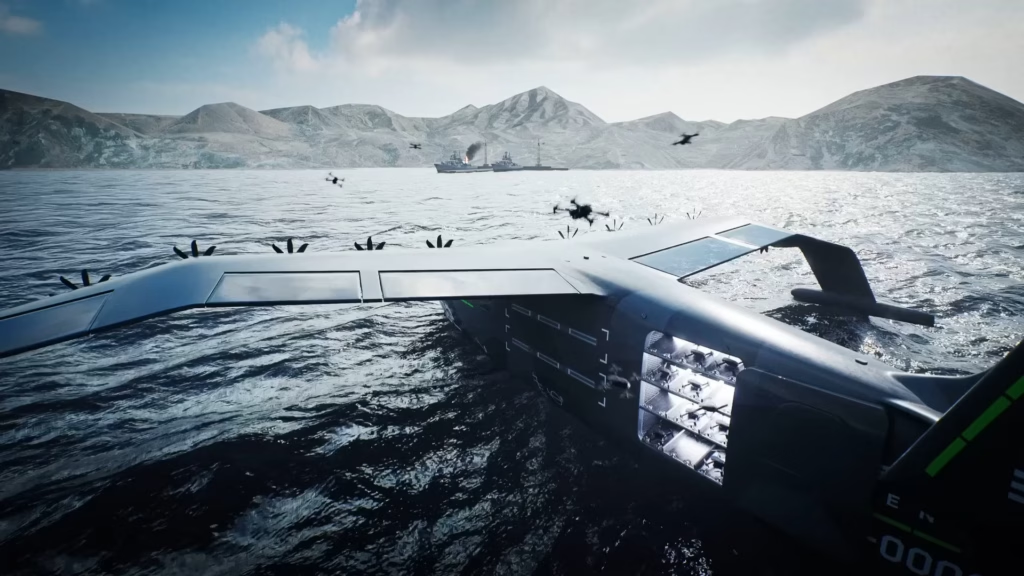
The Viceroy’s near-silent electric propulsion offers a low acoustic signature, giving it an advantage in nighttime or stealth operations. Electric motors produce far less noise than gas turbines or diesel engines, reducing the chances of acoustic detection by sonar arrays or coastal sensors. For special operations or reconnaissance missions preceding a full-scale assault, this low-noise profile can be vital.
A seaborne insertion under the cover of darkness, using Viceroy Seagliders to quietly bring Marines ashore in an enemy-controlled bay or estuary, would be far less detectable than using helicopters or conventional landing craft. This allows for more flexible insertion strategies, including infiltrating urbanized shorelines, maneuvering through archipelagic terrain, or exploiting coastal chokepoints that might otherwise be inaccessible.
Flexible Landings
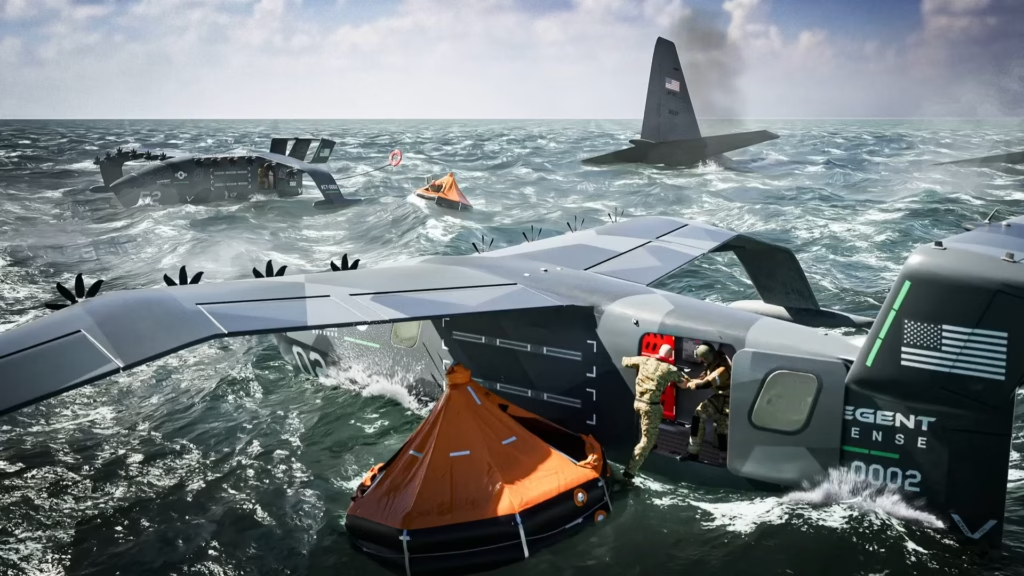
Another significant advantage lies in the Viceroy’s ability to use non-traditional landing zones. Amphibious operations have historically required beaches with specific gradients, firm terrain, and absence of obstacles like reefs or anti-landing defenses. Helicopters and tiltrotors, on the other hand, require open zones for safe vertical landings. The Viceroy bypasses many of these constraints by simply needing open water—harbors, lagoons, river mouths, or calm coastal bays—for its takeoff and landing operations.
This flexibility expands the range of potential landing points, giving planners the ability to choose insertion zones based on tactical advantage rather than environmental limitations. In an age where adversaries are fortifying predictable beachheads with missile systems, drones, and anti-access/area-denial (A2/AD) technology, the ability to come ashore where the enemy is least prepared is invaluable.
Logistical Agility and Modular Deployment
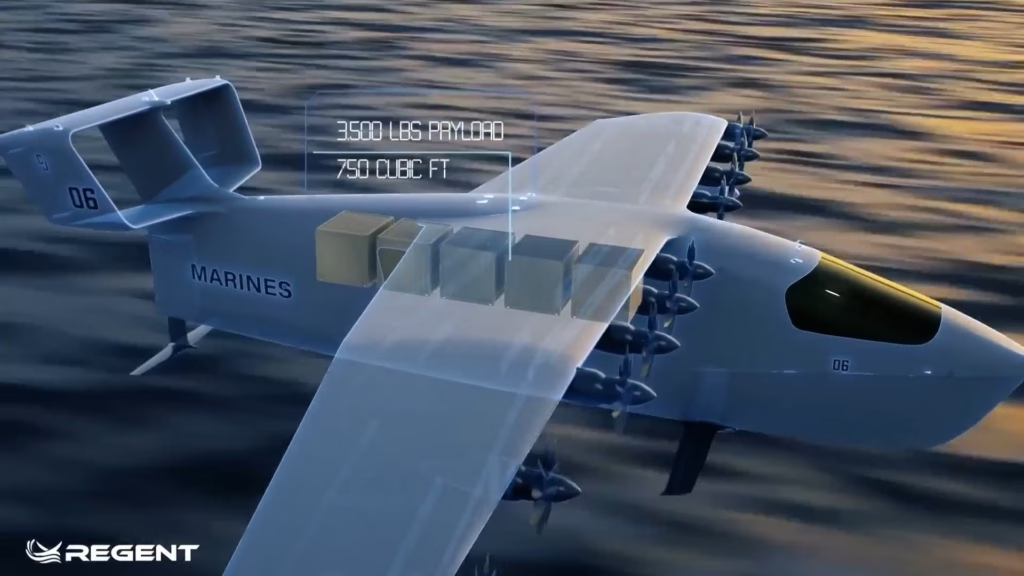
From a logistical perspective, the Viceroy is also highly compatible with existing naval operations. Since it can operate from standard piers and floating docks, it requires no specialized launch platforms. It could be deployed from amphibious ships like the San Antonio-class LPDs or even smaller expeditionary sea bases. Its electric design means reduced fuel requirements, simplified maintenance, and potentially lower lifecycle costs compared to gas turbine-powered craft or helicopters.
Additionally, its small footprint and modularity could allow for rapid configuration changes—troop transport, cargo hauling, surveillance, or even medical evacuation. For example, a combat-oriented Viceroy variant might include mounting points for light weapons, communication nodes, or drone launchers. This ability to rapidly reconfigure based on mission needs offers new levels of operational flexibility in maritime environments.
Alignment with Marine Corps Doctrine
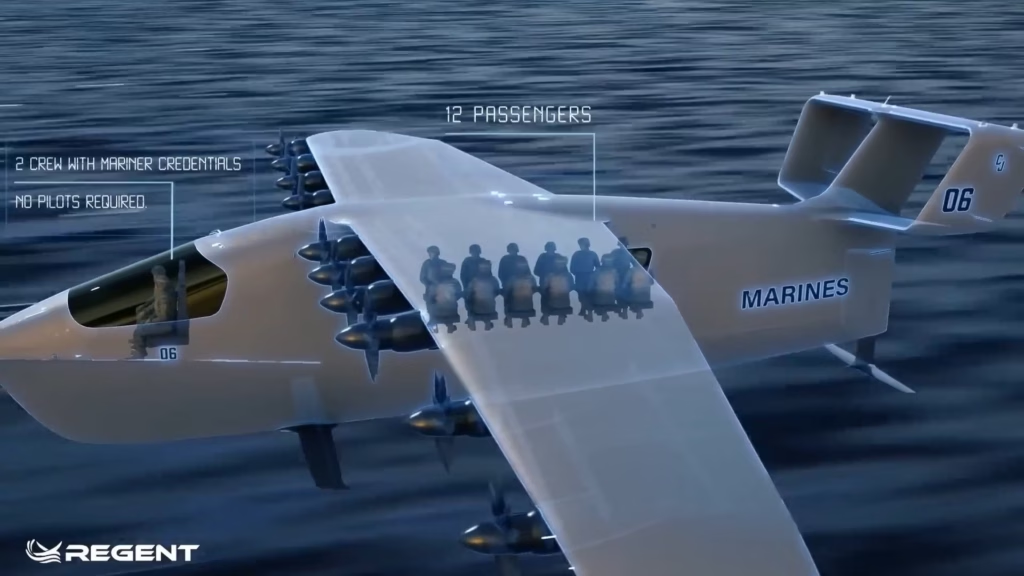
The impact of such a platform goes beyond mere tactical innovation—it aligns directly with the evolving strategic doctrine of the U.S. Marine Corps. In recent years, the Corps has emphasized distributed operations, expeditionary advanced base operations (EABO), and the use of small, mobile units to counter peer adversaries in contested regions.
Especially in the Indo-Pacific, where thousands of islands dot the ocean and create narrow maritime passages, the Viceroy’s speed and agility are ideal. Marines operating in dispersed formations could use seagliders to move between islands, reinforce isolated units, or launch preemptive strikes on enemy radar or missile sites. The ability to relocate forces rapidly without relying on airstrips or long-range helicopters could prove decisive in a fast-paced island conflict.
A Strategic Advantage
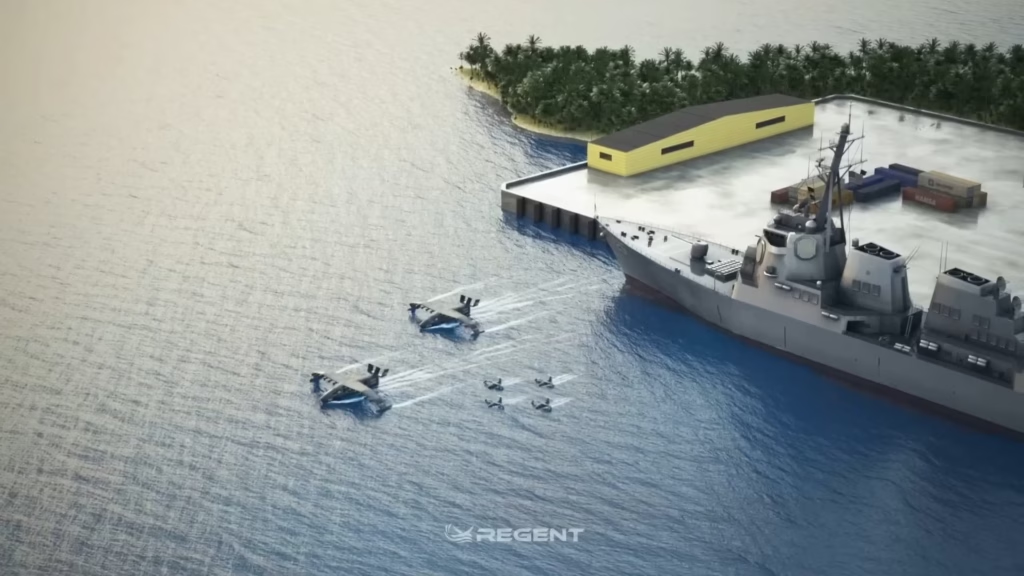
In a geopolitical context, the Viceroy could help counter the growing threat posed by China’s naval expansion and its fortified artificial islands in the South China Sea. If tensions were to escalate into open conflict, the ability to strike quickly and unexpectedly across vast maritime regions would be crucial.
A flotilla of Viceroy Seagliders carrying Marines, drones, or logistics packages could maneuver through shallow island chains, launch surprise attacks, or establish beachheads before the adversary has time to react. Similarly, in European theaters such as the Baltic or Black Sea, the Viceroy could support NATO operations by providing a rapid-response amphibious option in waters where airspace is heavily contested or GPS-jamming and radar coverage is dense.
Challenges and Technological Gaps
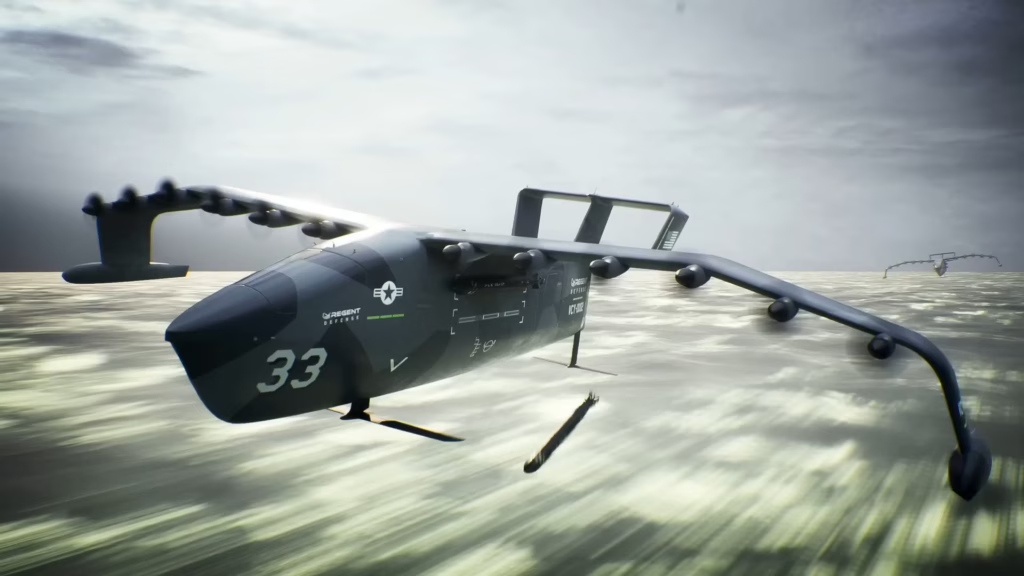
That said, the Viceroy’s integration into military service is not without challenges. The current civilian model is optimized for calm coastal waters and carries a limited payload—around 12 passengers or equivalent cargo weight. Military variants would need reinforcement for rugged environments, possible armoring, and enhanced avionics for contested spaces.
Operating in high sea states—such as during stormy weather or in open-ocean swell—remains a limitation of ground-effect vehicles, though improvements in hydrofoil design and flight control algorithms could mitigate some of these issues. Moreover, the vehicle’s survivability, once detected, is low. It would require integration of electronic countermeasures, flares, or even lightweight defensive weapons to survive in higher-risk zones.
Path to Military Adoption
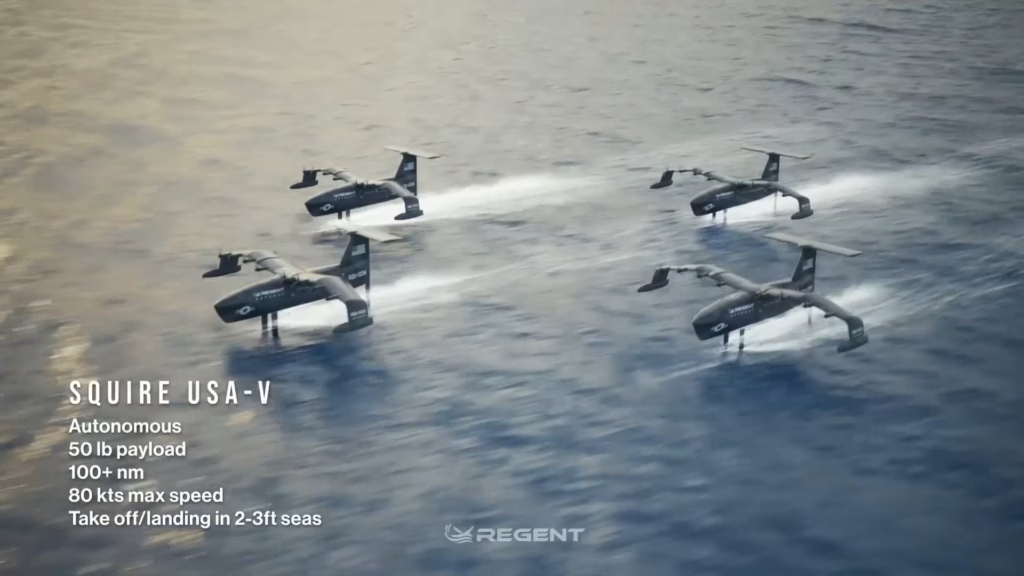
To bridge the gap between commercial innovation and battlefield utility, the Department of Defense could pursue a series of development steps. First, it could sponsor a military-specification (MILSPEC) upgrade program in partnership with Regent Craft Inc., focusing on durability, range extension, secure communications, and battlefield survivability. Second, the military could fund development of larger variants—perhaps scaling to carry 20 or 30 Marines or heavier payloads for equipment delivery. Third, the Seaglider could be developed in unmanned configurations, providing an autonomous troop shuttle or cargo hauler for high-risk environments. Finally, rigorous field trials would be necessary, ideally with forward-deployed Marine Expeditionary Units (MEUs) and Littoral Combat Regiments (LCRs) in environments such as Guam, Okinawa, or Hawaii.
Peacekeeping, Disaster Relief, and Dual-Use Roles
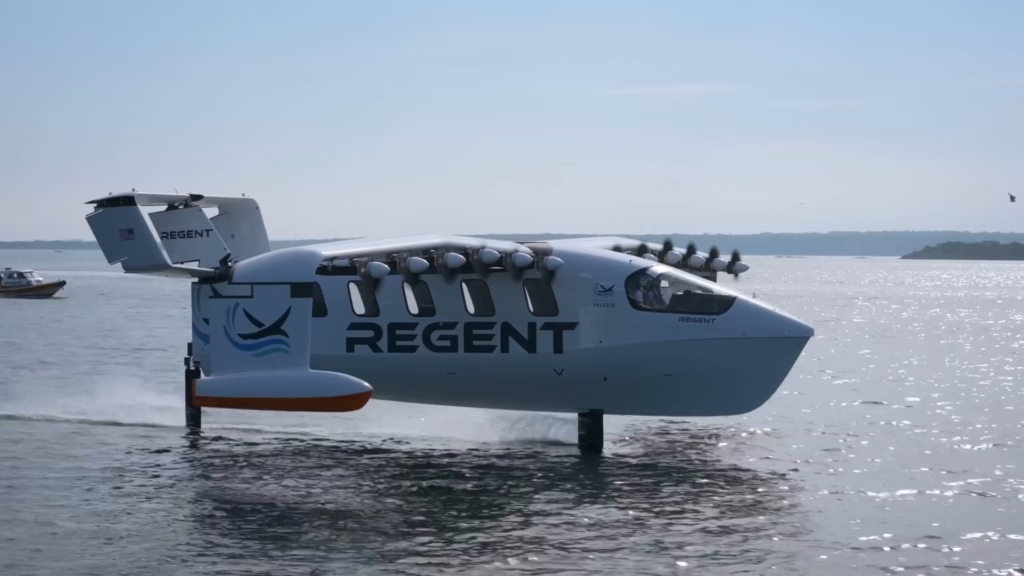
There is also potential for the Viceroy to support humanitarian missions and non-combat evacuations. In scenarios where natural disasters hit coastal regions—typhoons, tsunamis, or floods—the Viceroy’s ability to deliver relief supplies or evacuate civilians from areas with damaged infrastructure could provide a new rapid-response capability. This dual-use nature, where peacetime and wartime roles complement each other, would make the platform even more cost-effective and attractive for long-term adoption.
A Seaborne Revolution
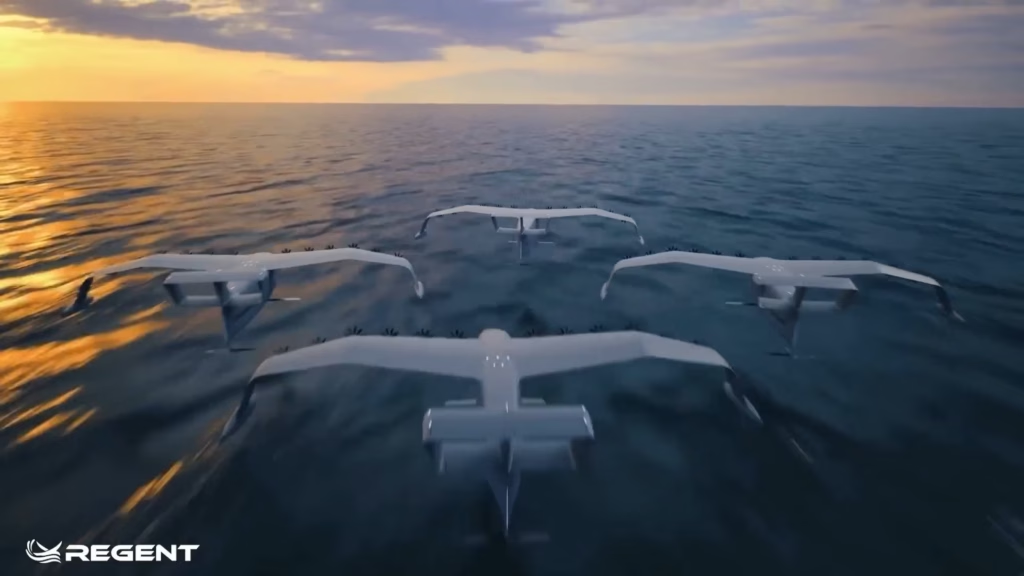
The Regent Viceroy Seaglider embodies a fusion of advanced aerodynamics, electric propulsion, and marine mobility that offers a transformative opportunity for the U.S. Marine Corps. It is not a replacement for amphibious assault ships, helicopters, or landing craft, but rather a complementary capability—one that adds speed, stealth, and flexibility to the Marine Corps’ toolkit.
In a future marked by fast-moving, decentralized, and technology-driven warfare, platforms like the Viceroy will be essential to outmaneuvering well-defended coastlines and seizing the initiative in contested littoral spaces. If integrated thoughtfully and deployed with tactical creativity, the Viceroy Seaglider may soon become an iconic symbol of a new chapter in amphibious warfare—swift, silent, and unstoppable.
Source: REGENT Craft

